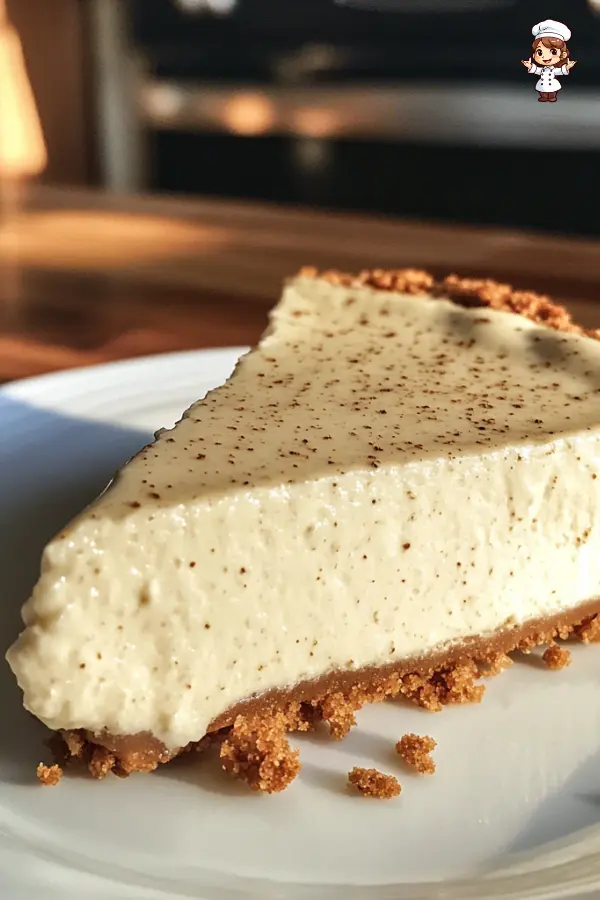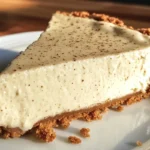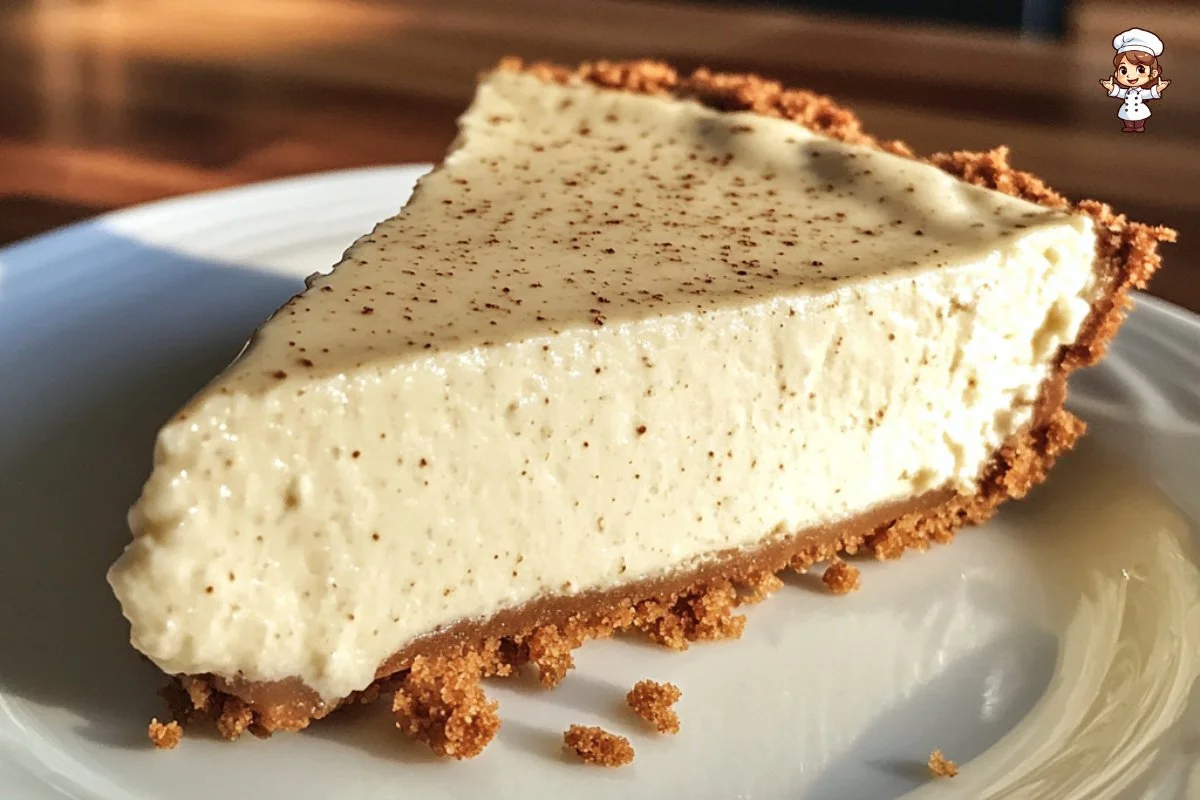Protein cheesecake is a delightful twist on the classic dessert, making it a favorite among health enthusiasts and sweet tooths alike. This cheesecake replaces high-calorie ingredients with protein-rich options, ensuring that you can satisfy your cravings without feeling guilty. Whether you are looking to boost your protein intake after a workout or simply indulge in a healthier dessert, protein cheesecake stands out as a fantastic option. The creamy texture and rich flavor make it hard to believe that it’s guilt-free. In this article, we will walk you through the steps to make your own delightful protein cheesecake, including tips on serving, storing, and variations to try.
Ingredients about Protein Cheesecake
List of Ingredients with Measurements
To prepare your protein cheesecake, you will need the following ingredients:
- Crust:
- 1 cup almond flour
- 2 tablespoons melted coconut oil
- 2 tablespoons honey or maple syrup
- 1 pinch of salt
- Filling:
- 2 cups Greek yogurt (plain or vanilla)
- 1 cup cottage cheese (or silken tofu for a dairy-free option)
- 1/2 cup protein powder (vanilla or chocolate)
- 1/3 cup honey or agave syrup
- 1 teaspoon vanilla extract
- 2 large eggs
- 2 tablespoons lemon juice
Optional Ingredient Substitutions
You can easily customize your protein cheesecake by substituting specific ingredients. For example:
- Use oat flour instead of almond flour for a different crust texture.
- Replace honey with stevia or another sweetener if you are looking to cut down on sugar.
- For a vegan version, substitute eggs with flax eggs (1 tablespoon flaxseed meal mixed with 2.5 tablespoons of water) and use non-dairy yogurt or tofu as well.
How to Make Protein Cheesecake

Step 1: Prepare the Crust
To begin, preheat your oven to 350°F (175°C). In a medium-sized mixing bowl, combine the almond flour, melted coconut oil, honey, and salt. Mix until it forms a crumbly texture. Press this mixture evenly into the bottom of a 9-inch springform pan, creating a firm crust. Once ready, bake in the preheated oven for 10-12 minutes or until lightly golden. Remove from the oven and let it cool while you prepare the filling.
Step 2: Blend the Filling
In a large mixing bowl or blender, add the Greek yogurt, cottage cheese, protein powder, honey, vanilla extract, eggs, and lemon juice. Blend the ingredients on medium speed until smooth and creamy. Ensure no lumps remain, and the mixture is well-combined. This step is crucial for achieving the perfect consistency.
Step 3: Combine and Pour
Once you have a smooth filling, pour it gently over the cooled crust in the springform pan. Make sure to spread it evenly using a spatula. Tap the pan lightly on the countertop to eliminate any air bubbles that may have formed during pouring. This step helps your cheesecake cook evenly.
Step 4: Bake the Cheesecake
Place the springform pan back in the oven and bake at 350°F (175°C) for about 25-30 minutes. The cheesecake is done when it is set around the edges but still slightly jiggly in the center. It will firm up as it cools. Once baked, turn off the oven, crack the oven door, and let the cheesecake sit inside for about an hour. This gradual cooling process helps prevent cracking.
Step 5: Chill and Serve
After an hour, remove the cheesecake from the oven and cover it with plastic wrap. Refrigerate for at least 4 hours, ideally overnight, to let it fully set and develop its flavors. When you’re ready to serve, carefully remove the sides of the springform pan, slice your cheesecake, and enjoy!
How to Serve Protein Cheesecake
Best Ways to Serve Protein Cheesecake
Protein cheesecake can be served in several delightful ways. You may choose to enjoy it plain, letting the rich flavors shine through. For an added touch of sweetness, consider topping it with fresh fruit like berries or sliced bananas. A light drizzle of honey or a sprinkle of crushed nuts can also enhance the presentation.
Serving Suggestions or Pairings
Some fantastic pairings include a dollop of Greek yogurt, which complements the cheesecake’s flavor while adding more protein. Consider serving your cheesecake alongside a cup of herbal tea or coffee to enhance your dessert experience. You could also pair it with a small scoop of your favorite ice cream for a delightful contrast in texture.
How to Store Protein Cheesecake
Proper Storage Methods
To keep your protein cheesecake fresh, store it in the refrigerator. Make sure to cover it properly with plastic wrap or place it in an airtight container. This will help prevent it from absorbing any odors from the fridge.
Tips for Reheating or Freezing
If you want to freeze your protein cheesecake, wrap it well in plastic wrap and then cover it with aluminum foil. To thaw, simply transfer it to the refrigerator for several hours or overnight. For serving after freezing, let it come to room temperature before slicing. Avoid reheating, as it’s best enjoyed chilled for optimal taste and texture.
Tips to Make Protein Cheesecake
Common Mistakes to Avoid
One common mistake when making protein cheesecake is overmixing the filling. Mixing for too long can incorporate too much air, causing the cheesecake to crack during baking. Another mistake is using a pan that’s too small, which may lead to spilling or uneven cooking. Ensure you have a properly sized pan for the best results.
Helpful Tips for Better Results
To achieve the best texture, allow all your cold ingredients to sit at room temperature before mixing. Use high-quality protein powder for optimal flavor and results. Remember to keep an eye on the cheesecake as it bakes; every oven varies, and overbaking can lead to dryness.
Variation of Protein Cheesecake
Suggested Variations or Twists on the Recipe
Consider adding different flavors to your protein cheesecake to keep things interesting. Swapping the plain Greek yogurt for flavored versions can add complexity. You can also mix in chocolate chips or swirl in your favorite fruit puree before baking for an exciting flavor boost.
Adjustments for Dietary Preferences
For a gluten-free option, ensure all ingredients such as almond flour are certified gluten-free. Vegans can swap out dairy for non-dairy options like almond milk yogurt and use flax eggs as mentioned earlier. Low-carb enthusiasts might enjoy using erythritol or monk fruit sweetener to keep sugar levels down.
FAQs
What can I do if the dish isn’t turning out right?
If your protein cheesecake turns out too dense or hasn’t set, it might need more blending! Ensure everything is fully blended to achieve a smooth consistency. If it cracks, don’t worry—top it with fruit or chocolate sauce! You can also try cooking it in a water bath to avoid direct heat, which can help with even cooking.
Can I make this ahead of time?
Absolutely! Protein cheesecake is perfect for making ahead. You can prepare it a day before the occasion and let it chill overnight in the refrigerator. This allows the flavors to develop and results in a beautifully set dessert.
What can I substitute for ingredients?
You may substitute Greek yogurt with non-dairy yogurt, and cottage cheese can be swapped with silken tofu for a vegan-friendly option. For crust alternatives, try using oat flour or coconut flour. Always adjust sweeteners to taste, and feel free to use any preferred protein powder flavor to match your taste preferences.
Enjoy creating and indulging in this delectable protein cheesecake! It’s a wholesome dessert that provides sweetness without the guilt. Whether you plan to share it with friends or enjoy it alone, it’s bound to please your taste buds and offer the nutrition your body deserves. Happy baking!
Print
Protein Cheesecake
- Total Time: 4 hours 50 minutes (including chilling)
- Yield: 8–10 servings 1x
- Diet: Low Calorie
Description
Protein cheesecake is a healthier, high-protein twist on the classic dessert, made with Greek yogurt, cottage cheese, and protein powder.
Ingredients
- 1 cup almond flour
- 2 tablespoons melted coconut oil
- 2 tablespoons honey or maple syrup
- 1 pinch of salt
- 2 cups Greek yogurt (plain or vanilla)
- 1 cup cottage cheese (or silken tofu for a dairy-free option)
- 1/2 cup protein powder (vanilla or chocolate)
- 1/3 cup honey or agave syrup
- 1 teaspoon vanilla extract
- 2 large eggs
- 2 tablespoons lemon juice
Instructions
- Preheat oven to 350°F (175°C). Mix almond flour, melted coconut oil, honey, and salt until crumbly. Press into a 9-inch springform pan to form the crust. Bake for 10-12 minutes or until lightly golden. Let cool.
- Blend Greek yogurt, cottage cheese, protein powder, honey, vanilla extract, eggs, and lemon juice in a large mixing bowl or blender until smooth and creamy.
- Pour the cheesecake filling over the cooled crust and spread evenly with a spatula. Tap the pan to remove air bubbles.
- Bake for 25-30 minutes or until edges are set and the center is slightly jiggly. Turn off the oven, crack the door, and let cool for an hour.
- Cover with plastic wrap and refrigerate for at least 4 hours or overnight. Remove the springform pan sides and slice to serve.
Latest Amazon Finds
Notes
- Ensure all ingredients are at room temperature for a smoother consistency.
- Use high-quality protein powder for the best flavor and texture.
- Allow the cheesecake to cool gradually to avoid cracks.
- Refrigerating the cheesecake overnight enhances its flavor.
- For a vegan option, replace eggs with flax eggs and use non-dairy yogurt.
- Prep Time: 15 minutes
- Cook Time: 35 minutes
- Category: Dessert
- Method: Baking
- Cuisine: American
Nutrition
- Serving Size: 1 slice (1/10 of recipe)
- Calories: 220
- Sugar: 10g
- Sodium: 180mg
- Fat: 12g
- Saturated Fat: 4g
- Unsaturated Fat: 7g
- Trans Fat: 0g
- Carbohydrates: 18g
- Fiber: 4g
- Protein: 15g
- Cholesterol: 60mg
Keywords: Protein cheesecake, healthy cheesecake, high-protein dessert, guilt-free cheesecake, fitness dessert



